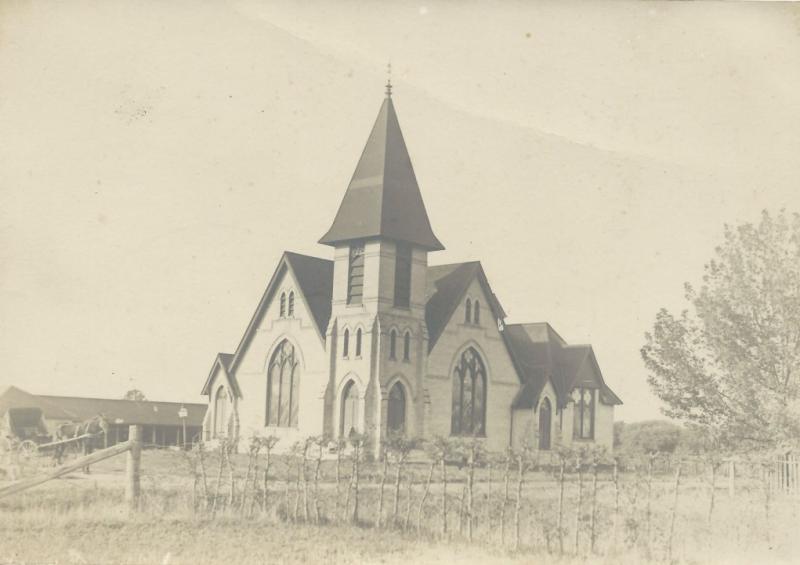
Previous to 1863, many residents of the Burns area worshipped with St. Andrew’s Church in Sarnia under Rev. David Walker of the Free Church of Scotland. Early settlers travelled a long journey over unimproved roads (often in a lumber wagon) to reach their place of worship. A fourteen mile trip to and from church was both an uncomfortable experience and a deterrent to regular church attendance.
Due to Rev. Walker’s failing health he was unable to conduct services in outlying centres. The people of the settlement decided to seek a merger with another congregation. Bear Creek congregation consented to share with the Burns settlement the services of a minister who might visit from time to time. This arrangement continued for a short time with missionaries giving service.
As the Burns settlement grew, the need for a church within the community became evident. Accordingly, on February 4, 1863 a meeting was held at the home of Mr. Andrew Hossie. The meeting was called for the purpose of obtaining the services of a minister from the Canadian Presbyterian Church. He was to “preach and dispense divine ordinances in the locality as often as practicable”. Plans were also formed for the erection of a church.
Messrs. James Simpson, Archibald Gibb, and David Hossie were appointed trustees to the erection of a suitable church. It was to be on the northeast corner of Mr. Hossie’s farm; lot 16, concession 12, Moore Township (corner of Kimball Sideroad and the Lasalle Line). The specific dimensions of the church were to be not less than 20 feet wide and 30 feet long. Three years later, 18 feet was added to the length of the building, and a porch was built on the front. The church was named “The Sarnia and Moore Station of the Canada Presbyterian Church” and opened for worship on October 25, 1863. Two years later the church was named “Burns” in honour of Dr. Burns who conducted the first service of sacrament in the new church.
In 1863, the congregation used the system of rented pews. Each pew had a specific number and was allotted to a definite family which paid a rental fee (50 cents). The system of pew-rents was abolished in 1871.
Burns residents met for worship under Rev. Peter McDiarmid. His salary consisted of $325 from Bear Creek and $175 from Burns. Rev. McDiarmid was forced to resign in 1878 due to ill-health. In that same year, Burns was united with Mooreline as a pastoral charge and Bear Creek and Brigden were formed into a new distinct charge.
August 2, 1879 a meeting was held in which Burns and Mooreline decided on a site on which to build a manse. Land was purchased from William Simpson on the southeast corner of lot 16, concession 1, Sarnia. The adjoining white brick manse was built that year at a cost of $1,903.99. By 1888, the congregation felt the need for a larger church building, which resulted $7,000 later. Sunday school seats, chairs, tables, lamps and library glass were paid for by the Young People’s Society. The interior displays an unusual wealth of religious symbols on seats, windows, pulpit chairs and trim. The new church opened January 15, 1888, with Rev. Campbell of Toronto preaching both services. The church opening was well attended. Sunday collections totaled $366.40 and an anniversary social held two nights later raised $329.99 (at 50¢ per ticket, that was a good crowd).
On Nov. 4, 1908, the Ladies’ Aid Society was organized. In 1911 the name “Ladies’ Aid” was changed to the “Co-operative Missionary Society”. In July 1914, the name “Women’s Missionary Society” was adopted and not changed again until the society became the “United Church Women” in January 1962.
In the early 1920’s, girls’ outdoor basketball was becoming a popular sport. Burns’ “Live Wires Basketball Club” was formed. Part of the field they used became the church grounds.
In 1925 a vote was taken on church union. Results were in favour of union and the church became Burns United Church. In 1927, the Providence congregation discontinued services, and in 1931, Lucasville also closed services. Many of these members became part of the Burns congregation.
The church underwent renovations in 1956. A new roof was laid, a new oil furnace installed and the trim was repainted. Inside, the walls were newly plastered and the floors and pews were sanded and refinished. The windows were re-leaded and the large stained glass windows were made secure with storm windows.
On January 13, 1963, a new annex was opened to give additional space to the Sunday School, and improve the kitchen facilities and the pastor’s study. Since that time the Sunday School has been modernized and beautified with concealed fluorescent lighting, paneled walls and new floors. Also in 1963, a worship centre was created. The church building was closed in 1985 and is now used as a private residence. At that time, the church amalgamated with Mooreline United Church to form Burns-Mooreline United Church and services continued at the Mooreline location until its closure in 2012.

